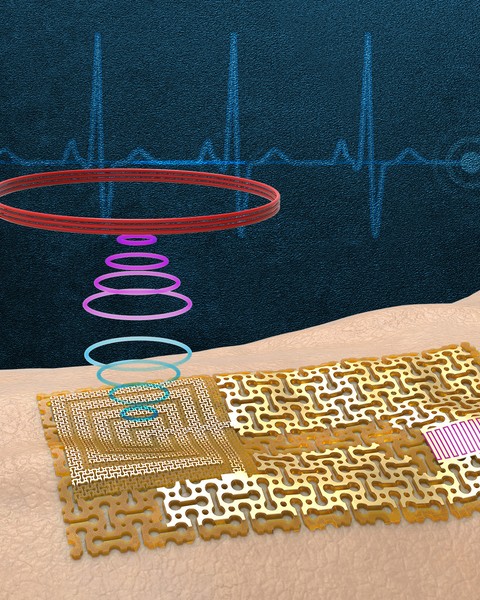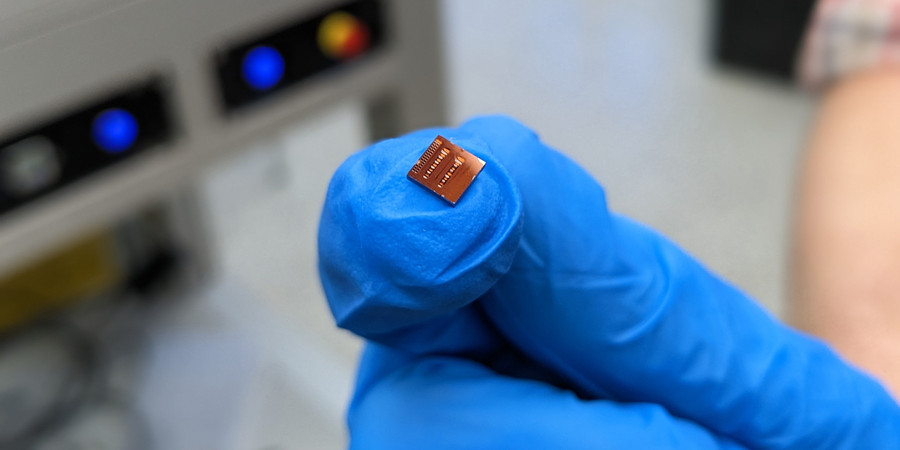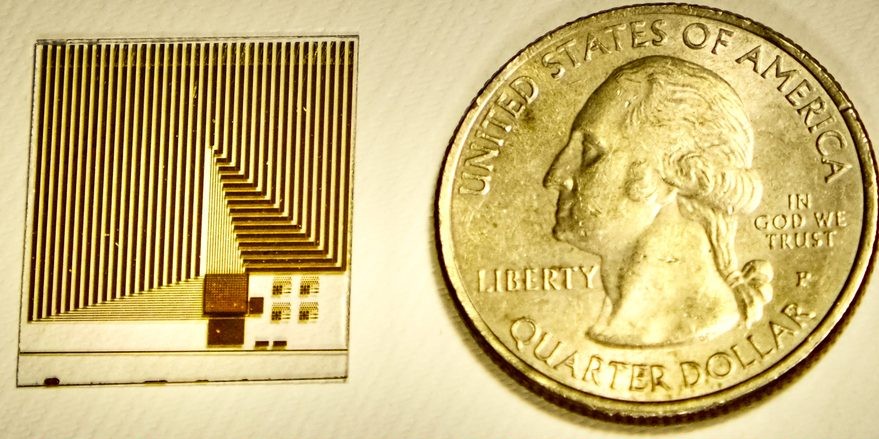Jennifer Chu | MIT News Office
August 18, 2022
Wearable sensors are ubiquitous thanks to wireless technology that enables a person’s glucose concentrations, blood pressure, heart rate, and activity levels to be transmitted seamlessly from sensor to smartphone for further analysis.
Most wireless sensors today communicate via embedded Bluetooth chips that are themselves powered by small batteries. But these conventional chips and power sources will likely be too bulky for next-generation sensors, which are taking on smaller, thinner, more flexible forms.
Now MIT engineers have devised a new kind of wearable sensor that communicates wirelessly without requiring onboard chips or batteries.
Complete article from MIT News.
Explore
Bringing Lab Testing to the Home
Zach Winn | MIT News
The startup SiPhox, founded by two former MIT researchers, has developed an integrated photonic chip for high-quality, home-based blood testing.
This Tiny, Tamper-proof ID Tag Can Authenticate Almost Anything
Adam Zewe | MIT News
MIT engineers developed a tag that can reveal with near-perfect accuracy whether an item is real or fake. The key is in the glue on the back of the tag.
New Sensor Mimics Cell Membrane Functions
Anne Trafton | MIT News Office
The device detects the same molecules that cell receptors do, and may enable routine early screening for cancers and other diseases.




